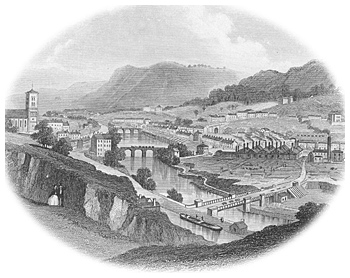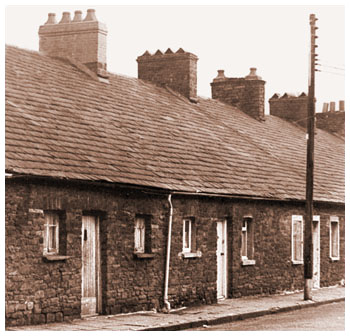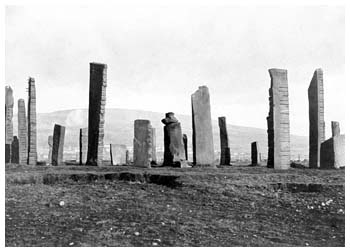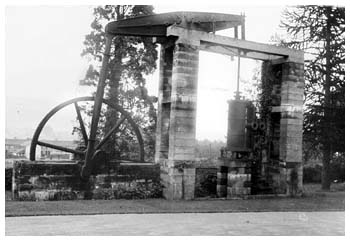
| Treforest | |
The development of Treforest into the modern village of today is due almost entirely to the industrial ambitions and capital of the Crawshay family of Merthyr Tydfil. Their association with Treforest began in 1794 when William Crawshay purchased a plot of land at Ynyspenllwch on which stood a small mill for the rolling of tinplate. This enterprise with the aid of the Glamorganshire Canal, which opened in 1794 to transport its products, became an immediate success. |
|
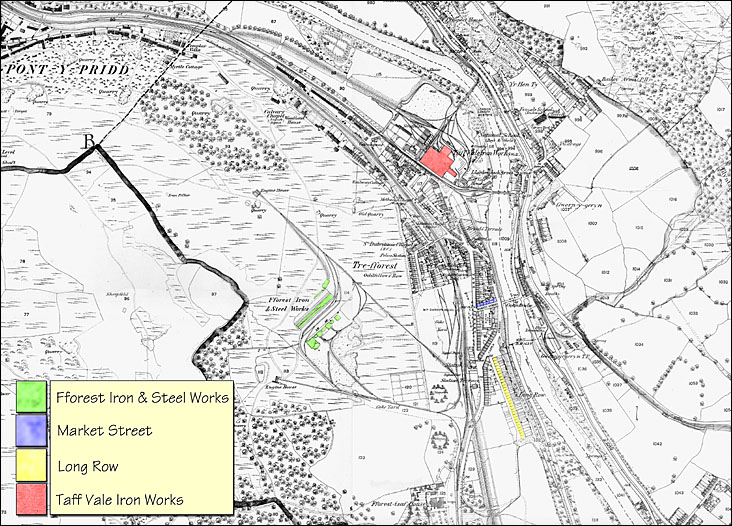 |
|
| The following years saw the expansion and modernisation of the tin works until by 1836 they had become the largest in Britain. During this period the Crawshays had also acquired a small iron works by purchasing adjoining land to their existing land at Treforest. They had expanded to form the Taff Vale ironworks, which in conjunction with the tin works formed the Fforest Works. By 1835 these works were under the direct control of Francis Crawshay who had moved to the Treforest from Hirwaun (where the family owned an ironworks) and now lived at Forest House that was later to become the site for the University of Glamorgan. | |
This engraving circa 1900 clearly shows Treforest as it was at that period viewed fron Glyntaff |
It was the success of these two industries and the early link to the Rhondda coal trade provided by Dr. Griffith's tram road between Dinas and Treforest that led to the rapid growth of the village. Large numbers of workers were attracted to the district and the subsequent rise in population led to an increase in both building activity and trade. Houses were quickly built to accommodate the workers, some of the earliest streets being Long Row, Forest Row, River Row and Market Street, and shops opened to provide them with the goods they required. Public houses were opened with five being listed in the 1884 Kelly's Trade Directory, including the Ballar's Arms, the Greyhound Inn and the Danygraig Arms. |
| The religious needs of the inhabitants were also catered for with the establishment of many non-conformist chapels, some of the earliest being the Libanus Welsh Baptist Chapel (1841) and the Saron Methodist Chapel (1843). Treforest was the first village in the district to have an established post office and any mail from Pontypridd passed to the Treforest Post Office before despatch. It also had one of the earliest markets, with regular markets being held at the Market Square (later known as Castle Square) from at least 1803. Treforest railway station was not opened however until 1847. Today Treforest is often considered to be simply an offshoot of Pontypridd, mostly noted for its university. However during the early part of the 19th century Treforest was unquestionably a livelier place than Pontypridd (or Newbridge as it was then known) with more facilities and a greater potential as a town. |
One of the earliest streets in Treforest was Long Row Terrace shown in this picture circa 1977 |
| University of Glamorgan (Forest House) | |
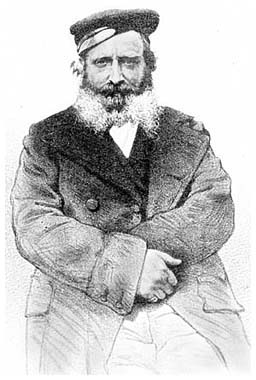 |
William Crawshay II (1788 -1867) began a modernisation process at the Treforest Tinplate Works in the early 1830s. He lost interest however when he inherited the Cyfarthfa empire in 1834 following the death of his father William Crawshay I. Responsibility for the completion of the modernisation process was therefore placed in the hands of William II son, Francis Crawshay (1811 -1878). By 1836 the works were back in full production and Francis moved into the property known as Forest House. The house had been built for his grandfather and stood on the site of a farm, Fforest Isaf (Lower Forest).
Left: Francis Crawshay |
Forest House, now owned by the University of Glamorgan and known as A Block, is a listed building. Externally, it remains as it was in Francis Crawshay's day. However the grounds of Forest House have seen great changes over the years. In the late 1880s Barry Railway Company built a line that ran across the land behind the house before entering the Treforest tunnel, which took it on to Pontypridd. The orchards on the hillside below the line disappeared at the beginning of the 20th century as streets including Forest Grove, Bertha Street and Hilda Street were built. Right: Forest House |
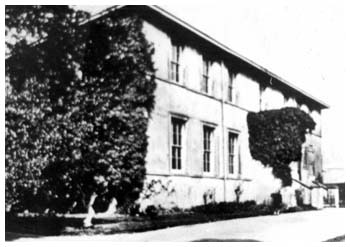 |
Francis Crawshays' standing stones |
During his time Francis Crawshay had erected many isolated standing stones in Forest House's grounds. After his death these were gathered by his brother Henry Crawshay (1812 -1879) and arranged to form a circle of tall stones. These stones were removed in the mid 1950s to make room for the expansion of Glamorgan Technical College. After the Crawshay family left Forest House it was owned by a local solicitor named Walter Morgan 1853-1901. He founded the Pontypridd firm of Morgan, Bruce and Nicholas solicitors, which worked closely with the South Wales Miners' Federation. It was from his widow that the house was purchased for the purposes of the South Wales and Monmouthshire School of Mines in 1913. It was at this time that John Calvert's 1845 winding and pumping beam engine was removed here from the Gellwion Colliery. |
| The constitution of the school was established under a deed of trust with the earl of Plymouth, Lord Merthyr and David Davies as the trustees and George Knox (1869 -1950) was appointed as the principal. It was financed by a levy on the output of the subscribing collieries. This private sponsorship continued until 1928 when the school of mines was placed under the control of Glamorgan Education Authority. From 1940 the college was known as School of Mines and Technology. Despite the change in name the premises remained very much the same as they were in 1913. They college consisted of four departments and had approximately 150 full-time students and about 800 part-timers. It was the immediate post-war period that saw an expansion and diversification of courses. |
The pumping beam engine from Gellwion Colliery |
| A number of prefabricated workshops and laboratories were set up and four aluminium classrooms erected behind Forest House. In 1956 the building of a double-storey block near Forest House was completed. The school's success in catering for the growing demand on higher education was reflected in its changing status, progressing quickly from Technical College (1949), to College of Technology (1958) and on to Polytechnic (1970). | |
| In 1967, the first hall of residence was opened on the campus with accommodation for a hundred students. At this time there were 632 full-time and approximately 1,500 part-time students. The college's campus continued to expand with the building of a multi-storey building for the department of civil engineering and building followed later by the students' union, the library and the department of business. The Further and Higher Education Act 1992 allowed Glamorgan Polytechnic to assume university title and corporate status. There was some discussion as to a suitable title for the institution in its new form. Among titles suggested was Crawshay University but some were of the opinion that the name of the ironmaster who had spent so many years at Forest House wasn't suitable and the title University of Glamorgan was adopted. Sir David Hunt, Secretary of State for Wales on 1 September 1992, performed the official opening ceremony. As we approach the centenary of Forest House as an educational institution the University of Glamorgan today has almost 19,000 students. |
|
